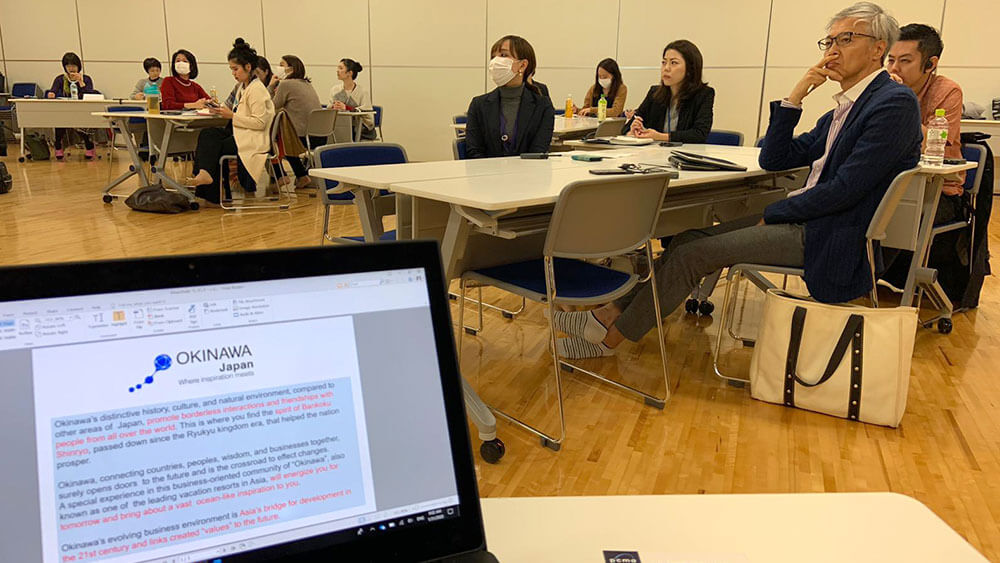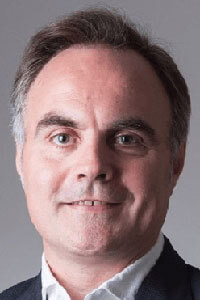
Some participants at the Okinawa Meetings Forum wear face masks during a session in late January. PCMA’s regional business director for the APAC region, Antonio Codinach, traveled from Singapore to Japan to attend the forum.
On Wednesday, Jan. 29, PCMA’s regional business director for the APAC region, Antonio Codinach, left his home in Singapore to travel to Japan for the Okinawa Meetings Forum. The forum was an opportunity to meet with senior leaders of the Okinawa CVB and several DMCs as well as to visit event venues. On Jan. 31, Codinach presented a one-day seminar for more than 20 business events professionals located in Okinawa, on topics including site-selection factors and how to cultivate incentive and association business leads. He traveled back to Singapore on Saturday, Feb. 1.
As he was traveling in Asia as news about the coronavirus was rapidly spreading and safety measures were being put into place, Convene asked Codinach to share his perspective.
My flight to Okinawa had a 1.5-hour stopover in Hong Kong. The flight from Singapore departed from Singapore Changi Airport’s terminal 4, which is the most recent terminal (completed in October 2017) and almost everything is automated. From checking in to immigration literally you don’t interact with any humans — just machines. Impressive!

Antonio Codinach
I could see right away that all ground staff at the airport were wearing face masks, as well as I would say around half of the passengers. At boarding gate level, all ground staff were wearing masks, as were the cabin crew when I boarded my Cathay Pacific flight, but I could still see their big smiles.
In the Singapore to Hong Kong leg of the trip, while about 75 percent of the passengers on the plane were wearing face masks, the atmosphere was positive and I saw no signs of alarm when people coughed or sneezed on several occasions. I was not wearing a mask and I never felt uncomfortable or exposed, but perhaps a little bit weird because I was in the minority.
Once we landed in Hong Kong, my first surprise was that everybody at the Hong Kong airport — ground staff and passengers — were wearing masks. There were automated temperature-check machines with several officials making sure that everybody passing by that point did not have a fever or any symptoms of illness. On my way to catch my second flight to Okinawa, I realized that in the transfer desk area, in a queue of 100 to 150 passengers, I was literally the only one without a mask. That made me feel like I really stuck out and was being observed by the majority, but I had no qualms about not wearing a mask. During waiting time before boarding, I definitely picked up on a greater sense of concern among the travelers.
I flew with Cathay Express, and once again, all the cabin crew were wearing face masks, plus I would say one out of every eight passengers. Still no mask for me. Once we arrived in Okinawa, I saw the same automated temperature-check machines, with a few Japanese officials making sure that no one passed through that checkpoint if they were not feeling well. Everyone with a Chinese passport was asked several questions in addition to the typical immigration questions.
Overall, it felt like residents in this city were less stressed about the outbreak. During the site visits on Thursday and the education day on Friday, everything went very smoothly, and only a few people were wearing masks.
I made sure throughout the entire trip to wash my hands often and thoroughly, especially before and after meals and interactions with others. I did not avoid shaking hands with people, and although a few declined to shake hands with me, it seemed fairly much like business as usual to me.
I did start to think that perhaps I should buy face masks, but in Okinawa, when I went to several big department stores, they were all sold out. I saw a couple of Chinese citizens trying to do the same, but none of us could find them.
Hand sanitizers, however, were available everywhere — at airports, restaurants, meeting rooms, venues, hotels, etc. as a precautionary measure against the virus.
My return trip on Saturday went smoothly. It was a similar experience at the Hong Kong International Airport as my trip several days earlier, but this time, ground staff were requesting passengers to show proof of residence to enter Singapore because 24 hours prior Singapore had banned all Chinese citizens or any travelers who had been in China in the past 14 days from entering the little red dot (Singapore). I showed my permanent Singapore resident card and informed the ground staff that I had not been in China in the past 14 days.
As soon as I landed in Singapore on Saturday night, I could see right away that the situation was more relaxed. These days, you can see that for as much as everybody talks about it and is concerned, the government has been sending clear information on what — and what not — to do and sharing some good measures for safety. The message from the local authorities in Singapore is very clear: You should only wear a mask if you are not feeling well or have a fever or are coughing. I continue to be mask free.
